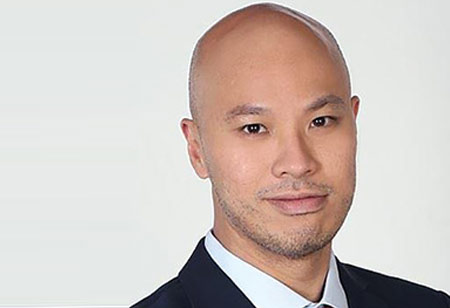Thank you for Subscribing to Healthcare Business Review Weekly Brief

Meeting Patients Needs In The Healthcare Space
Healthcare Business Review
Stephen Chan is specialized in anesthesiology and invasive therapies for pain treatment, such as implants, injections, and nerve ablation therapies. He is currently serving as the Senior Consultant Anesthesiologist at Woodlands Health. He has expertise in clinical informatics in managing all the medical systems that are used in the staff fronting space.
WHAT ARE THE MAJOR CHALLENGES AND TRENDS THAT ARE IMPACTING THE HEALTHCARE SPACE?
There is a rise in patient consumerism in the healthcare space. Patients are more particular about their choices, which hospital is the best, which are the best outcomes, having reviews from other patients, the convenience of being able to book appointments quickly, etc. From the consumer companies’ perspective, it has been much easier to shop and similarly, patients are expecting the same from the healthcare space. Traditionally, the space was conservative and slow, and now patient preferences are the top priority in the space and we are more inclined to the design of workflows, and how we deliver care.
WHAT ARE SOME OF THE TECHNOLOGICAL INNOVATIONS THAT ARE SHAPING THE FUTURE OF THE SPACE AND IMPROVING PATIENT CARE?
Traditionally finding preferred hospitals for patients was tough as knowing about the data on care quality and the cost was shrouded in secrecy. Now with technological advancement, knowing about the ratings and reviews of hospitals and practices, and their procedures has become much easier and transparent. Although it’s an advantage for the patients, they also need to ensure that the data are accurate and is their governance over what makes it onto the website.
Secondly, the healthcare outcomes are more dependent on the patient and doctor relationship. It’s important to choose a doctor you have a connection with. Therefore, healthcare systems are increasingly trying to match patients with the right doctors, allowing them to choose so that they can get an excellent patient experience and the relationship may last for long. I think healthcare is leveraging technological innovations and tools to optimize the doctor-patient relationship and use tech to gather data for that and make relevant recommendations.
HOW DO YOU ENVISION THE FUTURE OF HEALTH AND WELLNESS SPACE IN TERMS OF ENHANCED CARE DELIVERY?
The future of health and wellness space would be more focused in a social setting. How we harness the social elements, people around patients, social health care services like community gyms, and food services, and how we organize that to deliver necessary support for patients. The people surrounding patients can transform care delivery and get right into the heart of the community.
It’s Crucial To Know What The Patient’s Needs Are And Be Familiar With Technologies And Leverage Them In The Healthcare Setting
Moreover, there will be an increase in the empowerment of primary care and in order to drive health and wellness in the community, we need to reprioritize the role of hospitals but prioritize the role of primary care physicians. Traditionally, physicians and doctors felt they were not empowered, or specialized enough to deal with all symptoms. The tertiary care organizations can help them feel more confident, and link them to the right protocols to prevent over under referring conditions.
WHAT ADVICE WOULD YOU LIKE TO SHARE WITH ASPIRING INDIVIDUALS WHO ARE INTERESTED TO PURSUE A CAREER IN THE HEALTHCARE INDUSTRY?
It’s crucial to know what the patient’s needs are and be familiar with technologies and leverage them in the healthcare setting. One needs to be aware of the latest technologies like AI, augmented reality, and virtual reality and apply them carefully and sensibly to the healthcare space to meet the needs of the patients.









